Koryaksky volcano
Koryaksky volcano is one of the five ‘’domestic volcanoes‘’ of Kamchatka. It is active and the highest in the southern part of the peninsula. The steep slopes of Koryakskaya Sopka attract many professional mountaineers.
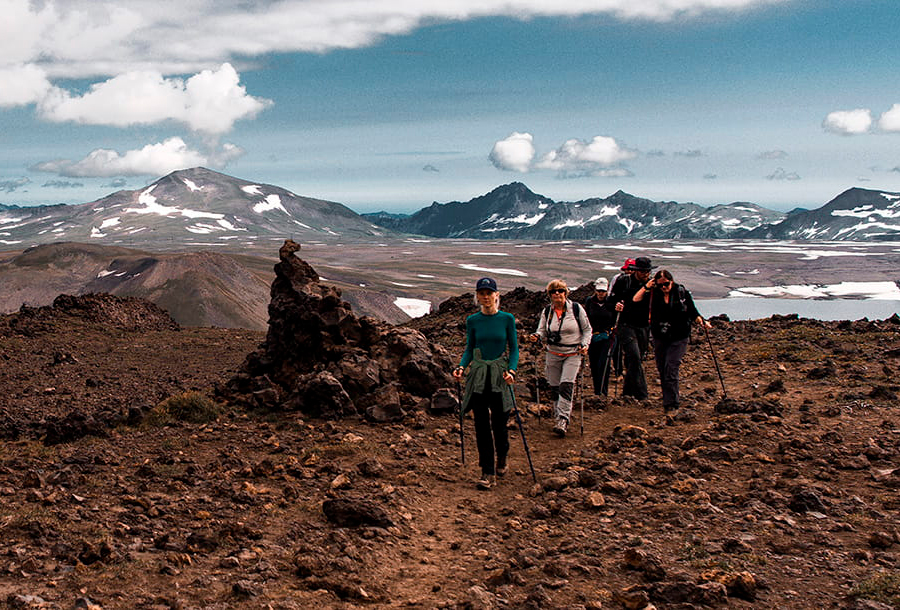
Kamchatka is part of the Pacific Ring of Fire. Earthquakes and eruptions are frequent here.
About Kamchatka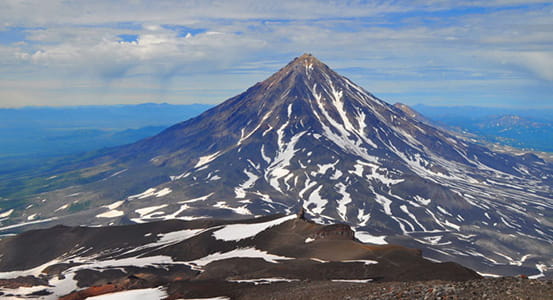
Koryaksky volcano is one of the five ‘’domestic volcanoes‘’ of Kamchatka. It is active and the highest in the southern part of the peninsula. The steep slopes of Koryakskaya Sopka attract many professional mountaineers.
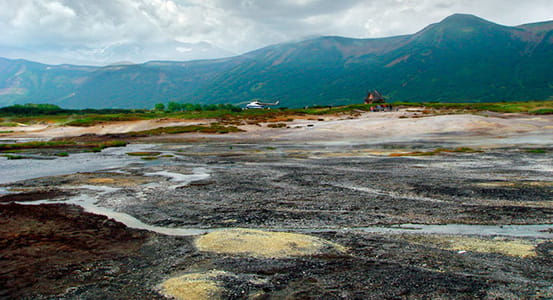
Uzon Volcano is the pearl of the Kronotsky Reserve on the Kamchatka Peninsula. It is a real natural laboratory where one can easily monitor and study different geological processes. Uzon is the place where the youngest oil on the planet comes out.
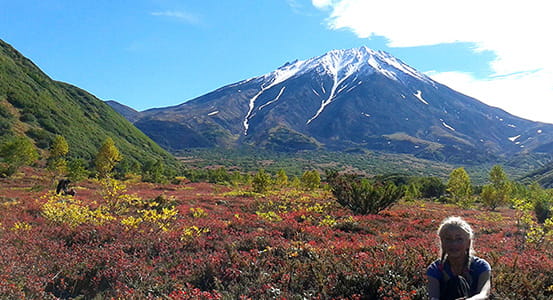
Bakening Volcano has retained the atmosphere of a place untouched by man, even though it is quite easy to get here. The surrounding area is full of beautiful scenery ranging from desert to lush vegetation.
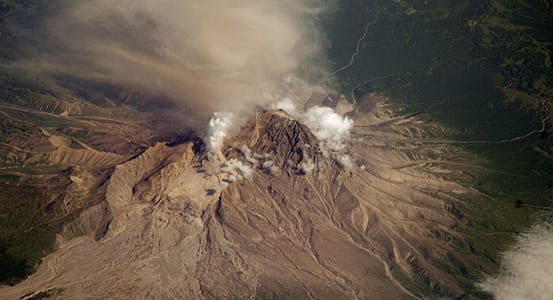
Shiveluch volcano is the most active volcano in the north of Kamchatka. Its eruptions, as a rule, are explosive in nature, with ash ejected to a height of several kilometres.
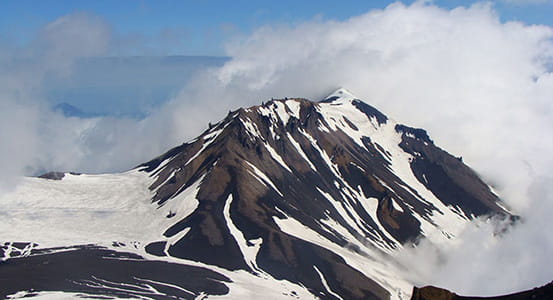
There is snow on the slopes of the Kozelsky volcano even in summer, and it is not surprising to see skiers and snowboarders.
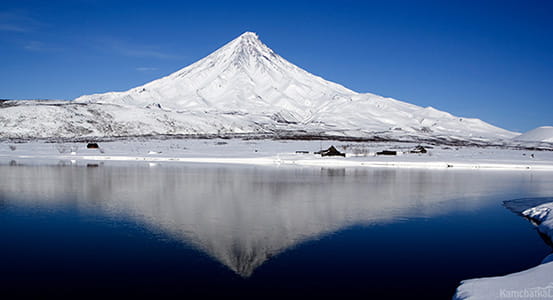
Kronotsky Volcano in Kamchatka is located on the territory of the Kronotsky State Reserve. The view of white glaciers on the top and the lake spreading at the foot creates an unforgettable panorama.

You will discover what interesting things the Mutnovsky volcano hides in itself, what is the modern volcanic activity and where you can bathe in the hot springs.

Gorely Volcano is an active volcano in the south of the Kamchatka Peninsula. Several craters are filled with acid lakes of unusually beautiful colour.
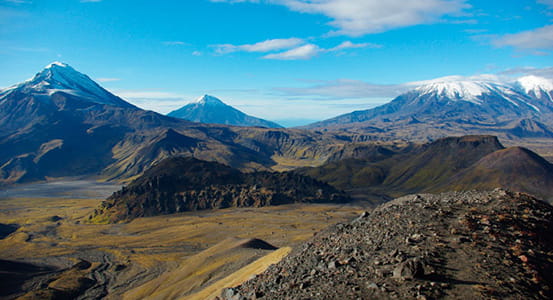
Plosky Tolbachik volcano is a volcanic massif in the east of the Kamchatka Peninsula. The specific feature of Plosky Tolbachik is liquid lava, which you can not see at any other active volcano in Kamchatka.
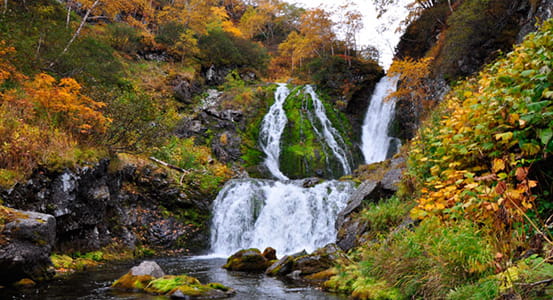
Easily accessible from the city, the amazing mountain scenery of the ruined ancient volcano Vačkažec is located here. Here you will find rare plants listed in the Red Book, glacial lakes, blue snowfields. A paradise for people who love botany.
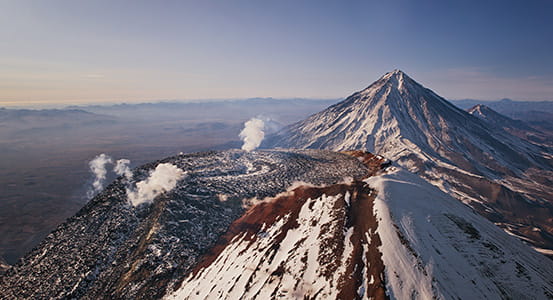
Avachinsky volcano is among the most popular Kamchatka volcanoes. Every year it is massively climbed by thousands of Petropavlovsk residents and visiting tourists. The reason for this is the relative ease of ascent and accessibility of the volcano.
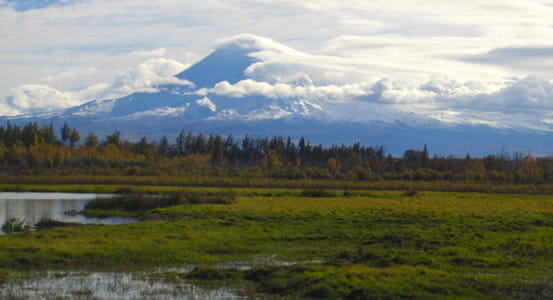
Climbing the Klyuchevskaya Sopka volcano is on the mandatory list of climbers who wish to receive the honourable title of ‘Snow Leopard of Russia’.
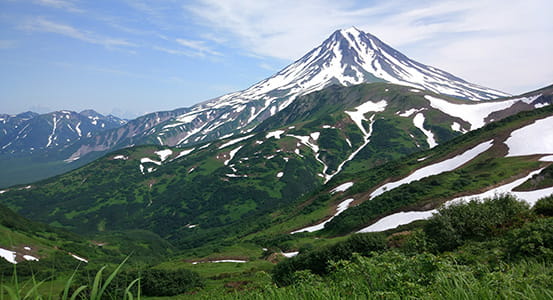
The route to Vilyuchinsky attracts tourists both in winter and summer. In summer you can admire the waterfall on its slopes, and in winter you can go skiing.
If you haven`t found a suitable tour in the general catalog, please send us your preferences and parameters for your future trip— dates, number of people. Our manager will be sure to make you a good offer.
Anastasia

Volcanoes of the Kamchatka Peninsula are an amazing sight. They occupy about 40% of the entire territory of the region. These giants, as well as the surrounding area around them, are constantly in a state of change. The eruptions themselves produce a stunning effect. Powerful elements of fire, hot red rivers of lava, explosive volleys and fireworks of rock. Certainly, a person who has had the opportunity to see this kind of natural phenomena, completely changes the attitude towards them.
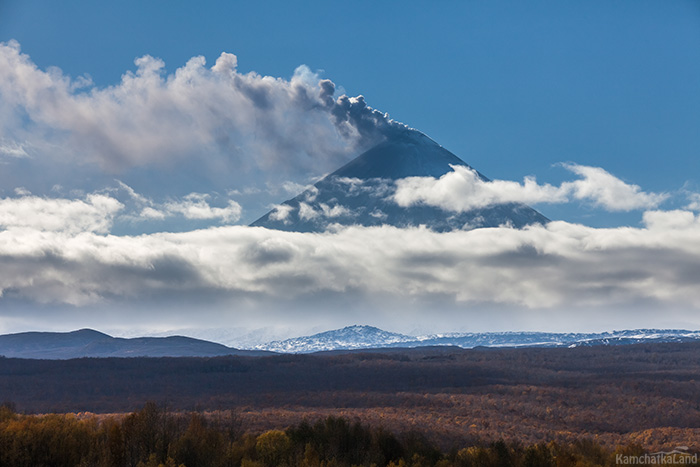
Volcanism is the most important geological process contributing to the development of the Earth's topography. At the stage of the planet's origin, volcanoes covered its entire surface. Later, the formation of structures began to form along the largest faults in the Earth's crust.
The origin of volcanism dates back to the Cretaceous period. Earth activity in the area has been evident for the last 2.5 million years.
The giants located on the territory of Kamchatka are part of the Pacific Ring of Fire. The latter is a certain area within the boundaries of the Pacific Ocean, where most of all active volcanoes on the planet are located. This zone counts 328 active terrestrial structures out of 540 known to mankind.
A volcano in its structure is a geological formation on the surface of the Earth's crust through which liquid melt escapes to the surface, forming volcanic rocks in the form of lava. They are classified according to their form: old volcano, shield-shaped, cinder cone, etc.; according to their activity: active, dormant, extinct; and according to their location in nature: terrestrial or underwater.

The structures of Kamchatka are characterised by a great variety of shapes and sizes. Their formation took place in different epochs, so to date they are active to varying degrees. Some of the giants belonging to extinct or having small dimensions are called mountains, regardless of their volcanic origin.
Now the whole territory counts 29 active centres. The title of active volcano was assigned to these hills depending on the historical period of their eruption. Some of them erupted more than 1000 and even 2000 years ago. Active does not mean ‘working’ all the time. In most cases, there is fumarolic activity between eruptions, represented by columns of water vapour and gas emissions.
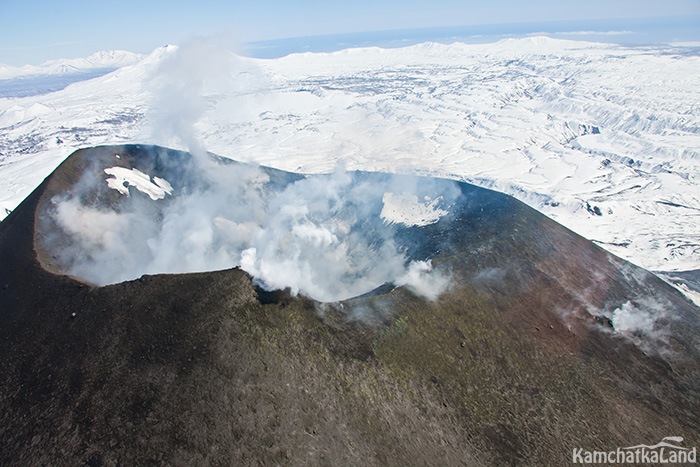
The area of activity changed over time, moving from west to east. This contributed to the formation of two main volcanic belts: the Middle Volcanic Belt and the East Kamchatka Belt. In the latter belt, the main group of active structures of Kamchatka has been formed to date.
Since 1996, thanks to the actions of the organisation Greenpeace Russia, the UNESCO World Heritage Site ‘Volcanoes of Kamchatka’ has been established in Kamchatka Krai. This nomination includes the Kronotsky Reserve, the South Kamchatka Wildlife Refuge and the Kamchatka Volcanoes Nature Park.
These fire-breathing mountains also have their own annually celebrated holiday, Volcano Day.
Grandiose volcanic phenomena and their consequences have attracted people's attention since ancient times. The first inhabitants saw them as harbouring gods and local spirits, and associated them with many legends.
Research and descriptions began around the beginning of the 18th century and formed the basis of many works and popular books. The first to describe the volcanoes of Kamchatka was the explorer S. P. Krasheninnikov in 1756. His book ‘Description of the Land of Kamchatka’ contains information about both high giants of this region and hot springs.
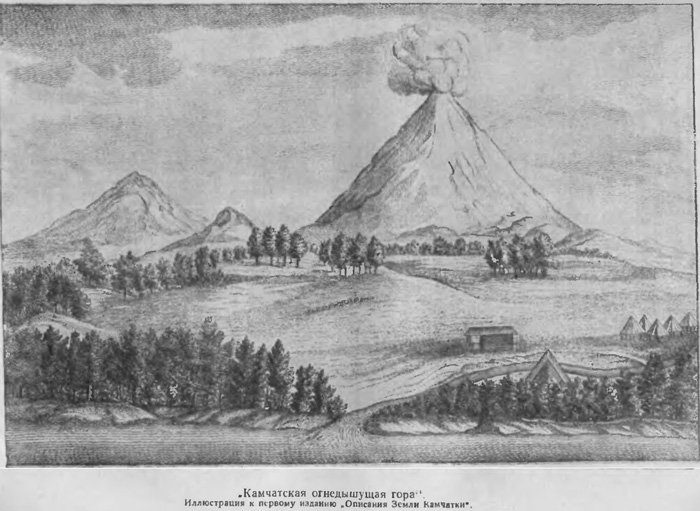
Systematic information on fire-breathing mountains began to appear in the works of P. T. Novograblenov, B. I. Piip and A. E. Svyatlovsky. The latter published the ‘Atlas of Volcanoes of the USSR’, based on the materials of aerial surveys carried out in 1946-47. One of the main modern works is the book ‘Active Volcanoes of Kamchatka’, published in 1991, containing 700 pages of description accompanied by hundreds of colour illustrations.
The first map with markings of buildings on the peninsula was made in 1926 by the scientist N. Kell, a member of the expedition of the Russian Geographical Society.
The biggest giant of the Kamchatka Peninsula, as well as the highest in Eurasia, is Kliuchevskaya Sopka. The height of the sopka varies from 4750 to 4850 metres. In the course of eruptions, part of the dome is demolished, and in the state of rest it grows again. The structure belongs to the stratovolcano type formations, its age reaches 7000 years. The last eruption dates back to August 2013. One of the strongest was the 1994 eruption, which lasted almost a month. The gas and ash fountain rose to a height of 13 km, and the size of the debris reached 2 metres in diameter. Грязевые потоки сошли на 30 км и достигли реки Камчатка.
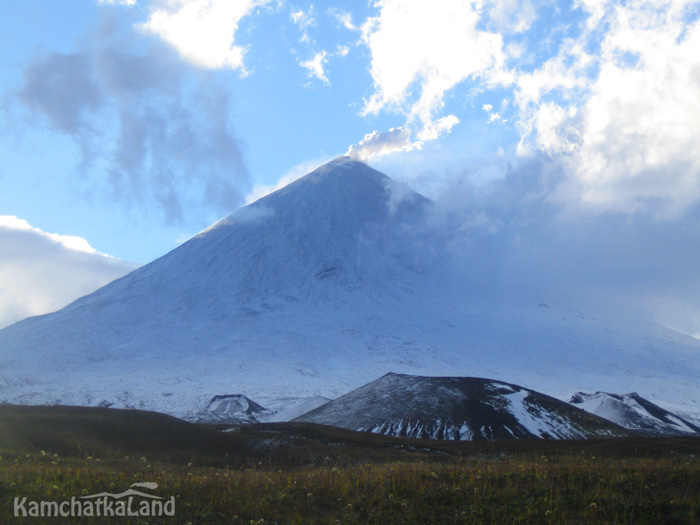
The Middle Volcanic Belt includes 65 objects. The highest point and the highest object of this belt is Ichinskaya Sopka. The height of the sopka is 3621 metres and it is the only active one of the Middle Belt. The others are classified as extinct or dormant. Alney, Bolshoi and Khangar are also included in the Middle Belt.
The most active East Kamchatka belt is divided into several groups, such as the Central Kamchatka Depression, Kharchinskaya Group, Kliuchevskaya Group, East Kamchatka Ridge, Uzon-Geysernaya Depression, Tolmachev Dol, Eastern Ridge, Avachinsko-Koryakskaya Group, Zhupanovsko-Dzendzurskaya Group and others. Some groups of volcanoes stretch for hundreds of kilometres along the peninsula. Some of the groups are characterised by very large volumes of volcanic rocks, up to 5000 cubic metres, which can be compared to the volume of all volcanic rocks in Japan.
The most famous sites of this belt, Kamchatka and Russia in general are: Kliuchevskaya Sopka, Shiveluch, Bezymyannyi, Kamen, Tolbachik, Kizimen, Komarova, Kronotskaya Sopka, Krasheninnikova, Kikhpinych, Bolshoi and Maly Semyachik, Zhupanovsky, Dzenzur, Bakening, Vachkazhets, Tolmacheva, Opala, Khodutka, Ksudach, Ilyinsky, and Zheltovskaya Sopka.
A separate group is distinguished by the Domashnye volcanoes group. Attributed to the East Kamchatka belt, it includes: Koryaksky, Avachinsky, Kozelsky, Aag and Arik. Sometimes Vilyuchinsky is also attributed to this group. This group of giants on the Kamchatka Peninsula has long been a site for tourist activities, leisure and competitions.
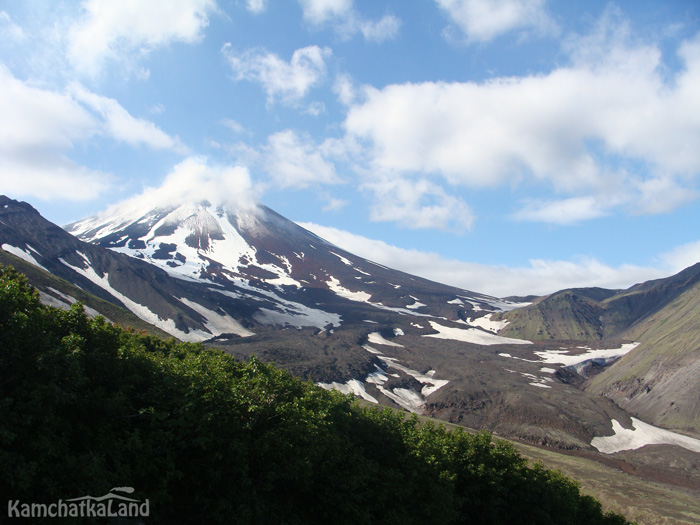
Although some of the structures are extinct, they can surprise with eruptions as much as active ones. It has often happened that extinct objects have been the sources of very large catastrophes. For example, the explosion of the extinct Bezymyanny in Kamchatka in 1956 is listed as one of the strongest eruptions of the last century. Puffs of white smoke were noticed in the autumn of 1955. In a few days the height of volcanic emissions reached 8 kilometres, and at night bright lightning flashed among the grey huge cloud. Strong explosions continued throughout November. At times, the cloud of smoke was so thick that it stopped allowing sunlight to pass through.
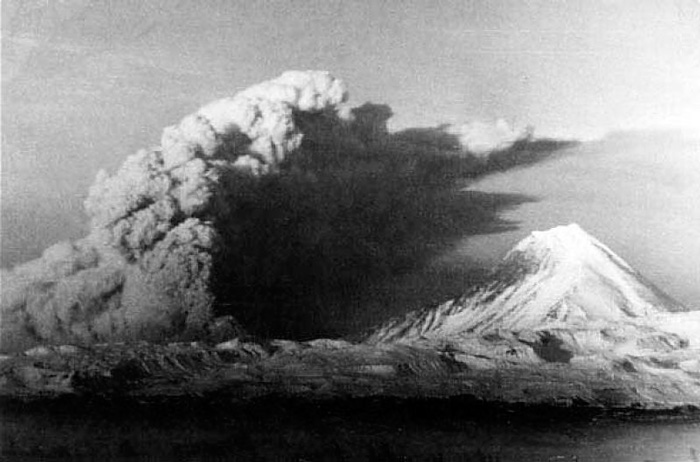
At that time, the volcano's crater expanded by 800 metres. A month later, a dome of viscous lava was seen forming in the crater, blocking the passage of gas emissions. The pressure inside the volcano became so great that the neighbouring dome, which once resembled a frozen rock, rose 100 metres high and moved in a south-easterly direction. On 30 March 1956, a huge explosion occurred. The fiery column accompanied by black smoke covered everything around and rushed upwards for 40 kilometres. In the village of Ust-Kamchatsk, 120 kilometres from Bezymyannyi, no horizon was visible. A little time later, a huge jet of gas 45 kilometres high followed. За ним пеплопад. Он был настолько сильным, что нельзя было разглядеть вещь в руках. The areas covered with ash were about 400 km long and the volume of ash was 0.5 billion cubic metres. Its ash emissions were spotted across the UK. After a violent eruption on 30 March, the final stage began and lasted until the end of November. Nameless changed. Fortunately, this catastrophe did not claim any lives. The surrounding areas were free of population.
To book a tour or get advice about travelling to Kamchatka, write to us through this form. Manager Anastasia will reply to your enquiry shortly.
Анастасия

To book a tour or get advice about traveling to Kamchatka, write us through this form. Our manager Anastasia will reply to your request shortly.
Anastasia

To book a tour or get advice about traveling to Kamchatka, write us through this form. Our manager will reply to your request shortly.
Igor

The request was successfully completed, instructions are sent to your email